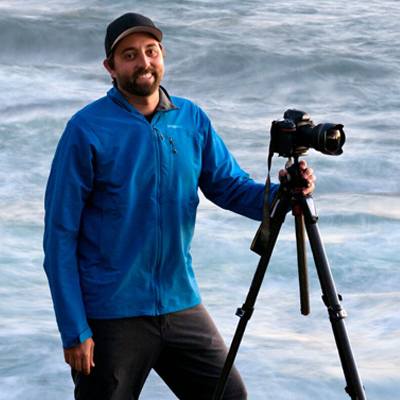RACHID DAHNOUN
GREEN TRAVELING
TRAVELING GREEN ON YOUR PROFESSIONAL ASSIGNMENT
As a professional photographer and director who is constantly on the road, I’m always trying to center my travel decisions around how to keep my environmental impact to a minimum. There’s no two ways about it – if you want to see the world, you’re going to leave a carbon footprint. I believe the little things add up though, and if we all do our part, we can start to tip the scales in the fight against climate change. To help ensure a better future for our planet, here are some of the green travel practices I like to follow while en route to set up my next shot:


ON THE ROAD
I work in a lot of remote locations and getting to those locations usually requires multiple modes of transportation. Air travel is an unavoidable reality that still isn’t very environmentally friendly. That said, companies like United Airlines are investing big into electric planes. I’m huge on supporting companies with green initiatives like this and will always speak with my wallet when it comes to who I fly with.
I'm similarly encouraged by the newest electric trucks coming out from a number of different manufacturers. When driving to set, I need a 4x4 capable of getting me over rugged terrain with a lot of gear in tow. As the price of ownership starts to come down and charging infrastructure continues to improve, my hope is that when I’m ready to purchase my next vehicle, an electric truck will be a viable option. In the meantime I’ve made a point of renting hybrid or electric vehicles when I travel, if the option is available. If I’m not weighed down with too much gear, I love to use public transportation, walk, or bike.
"DO YOUR BEST TO TREAD LIGHTLY AND HAPPY SHOOTING."
- Rachid Dahnoun
This is a statement that really hits home for me. It’s such a staggering number that nobody really talks about, as well as doing anything about it.
ON THE TRAIL
Whether hiking or setting up basecamp for a larger production, I always follow the seven Leave No Trace principles which you can read more about here:
1) Plan ahead and prepare.
2) Travel and camp on durable surfaces.
3) Dispose of waste properly.
4) Leave what you find.
5) Minimize campfire impacts. (Be extra careful with fire!)
6) Respect wildlife.
7) Be considerate of other visitors.
My favorite shots are often the result of finding a perfect new vantage point somewhere off the beaten path. In the age of social media, it’s almost second nature to geotag a location, but unless a location is already well known I don’t ever identify it in a photo/video and I never post GPS points. Respecting the power of the natural beauty I capture, I want to make sure I can help keep wild places wild. More often you’ll see me tagging a broader location like, “Yosemite National Park” or “Lake Tahoe.”
OVERNIGHT
When staying in a hotel, I try to do my homework. Lots of hotels proudly advertise their green credentials, even if it’s just about their recycling program or letting me opt out of having my towels washed daily. With those benefits multiplied by the other travelers they serve, an environmentally conscious hotel can go a long way in reducing my daily carbon footprint. Like I would at home, I make a point of turning off the lights when I head out to shoot.
If I end up camping on a more adventurous assignment, I pay special attention to the Leave No Trace principles above. I also never leave home without my reusable water bottle and coffee mug. Every time I do the math on how many bottles that saves, I’m still pretty shocked. The waste on single serving packages adds up quickly.
But most importantly, one of the best things I think a traveler can do both at home and on the road is to buy local. While cheaper or more convenient options are often available, keeping my money in the community I’m visiting not only supports the local economy but it also helps ensure I’m not purchasing items that already have a large carbon footprint of their own.
All of these practices may be small, but they start adding up as I keep shooting around the globe. If we all do our part, we can continue to shift the tide against climate change. Technology is evolving rapidly and more and more solutions are becoming available to help us live with sustainable intention as we explore the great outdoors. With minimal effort we can make more informed decisions that directly impact the environment for the better.






















